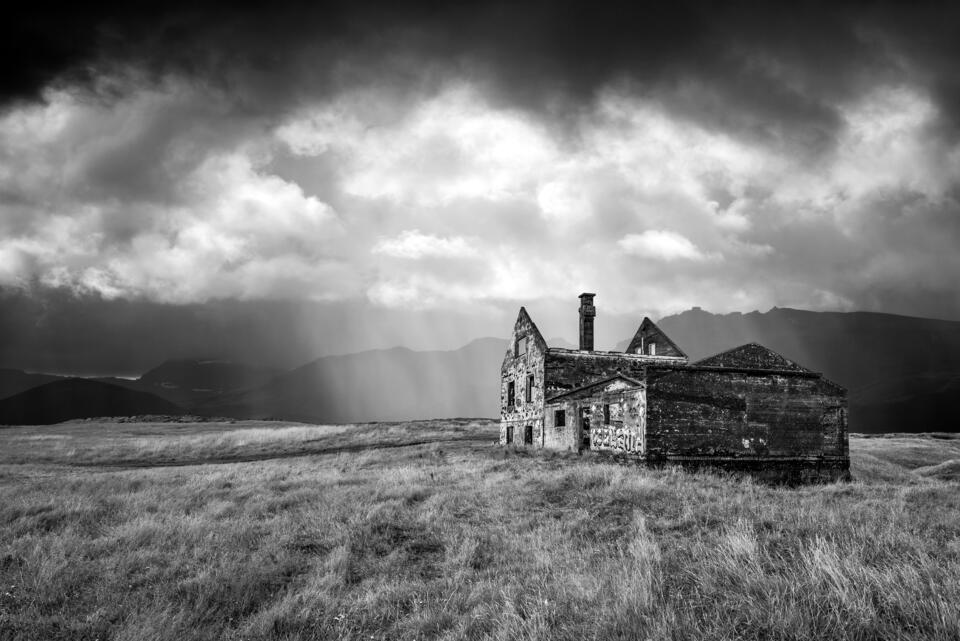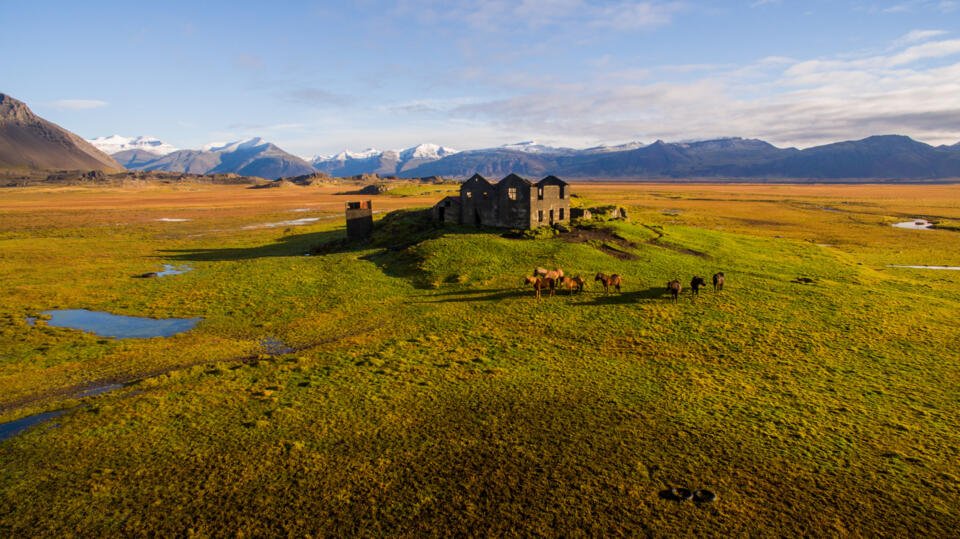Architecture in Iceland
About turf houses and roofs made of corrugated iron
Iceland, a country that was built with grass and soil hundreds of years ago. Due to the landscape shaped by volcanoes and the unusual climatic conditions usual building materials like bricks or wood were not or hardly present. Nevertheless, the architecture developed in a trend-setting direction, as the concert hall Harpa proves.
How everything began...
The Vikings settled in Iceland around 870 from Norway. Turf houses made of earth, small birch, driftwood or stones were built in different sizes. In the middle, there was the fireplace, where the family members gathered and slept. It is impossible to find buildings from that time due to the transience of the materials. The first buildings from the 15th century can be found during a holiday in Iceland in the museum court Glaumbaer. The usual house shape was the corridor house. All rooms were accessed by a long central corridor. The grass roofs are very typical for these houses in Iceland.
The first stone buildings in Iceland
One of the oldest and most well preserved buildings in Iceland is Videyjarstofa. It was built between 1752-55 by the first Icelandic governor Skúli Magnússon on the island of Videy near Reykjavik. Here, the first step was taken to encourage the Icelandic people to build long-lasting buildings and put them on stone. It wasn’t until the beginning of the 19th century that wood came into play. On an Iceland car rental trip, you have the best opportunity to go exploring these beautiful wooden houses. In addition to Reykjavik, these houses were also built with gable roofs in other small towns.
Over the years, the roof and exterior of wooden houses changed. Wood was expensive. Therefore, from about 1874 the roofs were clad with corrugated iron in addition to the outer walls. It was ideal for the harsh climatic conditions in Iceland, because walls and roofs were waterproof and fire-resistant. Many buildings made of wood burned down. In addition, an important building made of wood, which burned down, was the stave church in Skáholt, built in 1155, which was considered the largest of its time. Looking for a stave church during an Iceland holiday is impossible, because none of them from this time survived.
A revolution in Iceland
In 1905, the first fish steamer reached far-off Iceland. This was when the revolution started. In addition to fishing, which was industrialized, now they finally found a method to build durable and above all fire-resistant houses and buildings. The first building was built in Sveinatunga, Norðurárdalur. However, it took until 1920 that buildings slowly began to differ from traditional wooden and stone houses. An example you should visit when traveling through Iceland is the National Theater Þjóðleikhúsið.
New design options with concrete were implemented. However, the buildings were perceived as alien objects, which blend into the typical Icelandic picture badly. They worked on the architectural identity. The architect Guðjón Samúelsson took up the style of the gabled roof houses again and took over a motif from the Icelandic nature in addition to the column basalt formations, which can be found at the National Theater, the Hallgrim Church or the Catholic Church Landakotskirkja.
Glowing outer walls
After the Second World War, the outer walls became an eye-catcher. Covered in white or bright colours, natural materials have been used in conjunction with dark wood. Even the old traditional construction methods were brought back to life like the use of corrugated iron or longhouses.
Excellent concert hall
The 2008 financial crisis also affected the emergence of new buildings. One of the few large buildings, which was completed, was the concert hall Harpa in Reykjavik. Both the Icelandic Symphony Orchestra and the Icelandic Opera are located in the 43-meter-high building.
A definite go-to sight when visiting Iceland! It is a concert hall, which is located directly at the harbour with 1,800 seats, three smaller concert halls and a conference room. This architectural masterpiece from Iceland was also awarded the Mies van der Rohe Award in 2013.
Experience the surviving structures on your tour of Iceland. We are happy to advise you on all options and look forward to your call.




